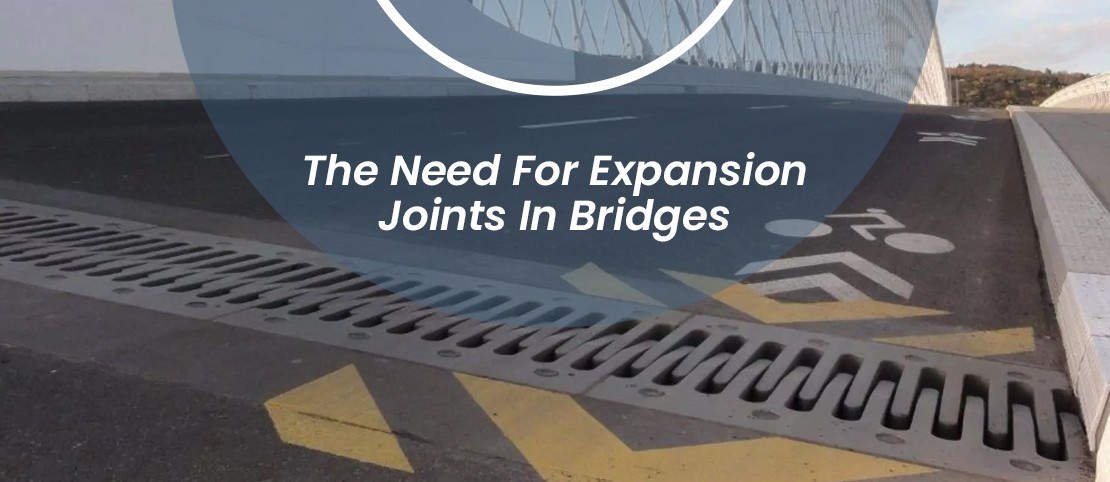Why Do Bridges Have Expansion Joints?
Bridges are a crucial component of modern transportation infrastructure, providing a safe and efficient way for people, vehicles, and goods to cross over water bodies, canyons, and other obstacles. Building a bridge is a complex process that requires careful consideration of many factors, including the impact of temperature changes and traffic loads on the structure. One essential element of bridge design is the incorporation of expansion joints, which are designed to allow for the movement of the bridge caused by environmental factors. In this post, we will explore what expansion joints are, why they are necessary, and how waterproof expansion joint systems protect bridges from water damage.
Defining Expansion Joints
An expansion joint is a structural gap designed to allow for the movement of a bridge caused by temperature changes, traffic loads, and other factors. Bridges are exposed to extreme environmental conditions, and temperature changes cause the bridge structure to expand and contract. If not managed correctly, this movement can cause structural damage, leading to costly repairs and, in some cases, bridge failure. Expansion joints allow the bridge to move without damaging the structure, making them an essential component of bridge design.
There are different types of expansion joints available, and each type is designed to accommodate the specific needs of the bridge. Some common types of expansion joints include strip seals, modular expansion joints, sliding plate joints, and finger joints. Engineers must carefully consider the type of expansion joint that best suits the bridge's needs.
Why are Expansion Joints Necessary?
Expansion joints are necessary to prevent structural damage caused by environmental factors. Without expansion joints, the bridge would be subject to extreme stress caused by the expansion and contraction of the bridge structure. Over time, this stress would cause the bridge to become weaker and eventually fail.
In addition to temperature changes, bridges are also subject to the stress caused by traffic loads. As vehicles travel across the bridge, they create vibrations that can cause the bridge to move. Expansion joints allow the bridge to move without sustaining damage, ensuring the safety and longevity of the structure.
Defining Waterproof Expansion Joint Systems
Waterproof expansion joint systems are designed to protect bridges from water damage, increasing durability, and reducing maintenance costs. These systems consist of a waterproof membrane, sealant, and drainage system.
The waterproof membrane is placed over the expansion joint, preventing water from entering the joint and surrounding areas. The sealant is then applied to the joint to ensure a watertight seal. Finally, a drainage system is installed to allow any water that does enter the joint to drain away from the bridge structure.
Waterproof expansion joint systems can significantly reduce the risk of corrosion and other forms of water damage. By preventing water from entering the joint and surrounding areas, engineers can increase the bridge's durability and reduce maintenance costs, as less frequent repairs are needed.
Waterproof Expansion Joint Systems on Bridges
Bridges are subject to harsh environmental conditions, including heavy rain, snow, and wind. These conditions can cause significant damage to the bridge structure if not adequately protected. Waterproof expansion joint systems are critical in protecting bridges from water damage, which can cause corrosion, structural weakening, and ultimately, bridge failure.
Waterproof expansion joint systems are designed to withstand the harsh environmental conditions to which bridges are exposed. These systems are tested for durability and are required to meet strict industry standards. Engineers must carefully select the waterproof expansion joint system that best suits the bridge's needs.
Types of Waterproof Expansion Joint Systems
There are different types of waterproof expansion joint systems available, and each type has its advantages and disadvantages. Some common types of waterproof expansion joint systems include:
Preformed Joint Systems - Preformed joint systems are made of a flexible material, such as neoprene, and are installed in a gap between the bridge deck and the abutment or pier. These systems are relatively easy to install and are commonly used on small and medium-sized bridges.
Pourable Joint Systems - Pourable joint systems consist of a liquid sealant that is poured into the joint gap and allowed to cure. These systems are flexible, durable, and provide a watertight seal. However, they are more challenging to install than preformed joint systems and are typically used on large bridges.
Strip Seal Joint Systems - Strip seal joint systems are made of a flexible rubber or neoprene material and are installed in a gap between the bridge deck and the abutment or pier. These systems are relatively easy to install, durable, and provide a watertight seal.
Modular Expansion Joint Systems - Modular expansion joint systems consist of several modular components that are assembled on-site. These systems are highly durable and provide a smooth riding surface for vehicles. However, they are more expensive to install than other types of expansion joint systems.
Conclusion
In conclusion, expansion joints are a necessary component of bridge design, allowing the bridge to move without sustaining damage caused by temperature changes and traffic loads. Waterproof expansion joint systems are critical in protecting bridges from water damage, increasing durability, and reducing maintenance costs. There are different types of expansion joint systems available, and engineers must carefully select the system that best suits the bridge's needs.
Preformed joint systems, pourable joint systems, strip seal joint systems, and modular expansion joint systems are some of the most commonly used waterproof expansion joint systems. Each type has its advantages and disadvantages, and engineers must select the system that best suits the bridge's needs.
By incorporating expansion joints and waterproof expansion joint systems into bridge design, engineers can ensure the safety and longevity of the structure, reducing the risk
Related Posts
Comments
By accepting you will be accessing a service provided by a third-party external to https://www.mbt-techserv.com/



